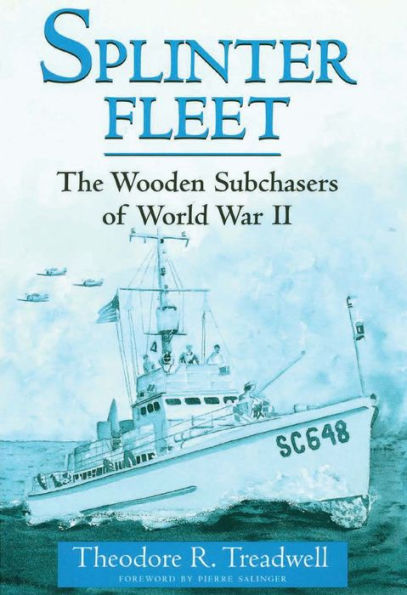Splinter Fleet: The Wooden Subchasers of World War II
Hastily built at the onset of World War II to stop German U-boats from taking their toll on Allied shipping, the 110-foot wooden subchasers were the smallest commissioned warships in the U.S. Navy, yet they saw as much action as ships ten times their size. In every theater of war these “expendable” workhorses of the fleet escorted countless convoys of slow-moving ships through submarine-infested waters, conducted endless mind-numbing antisubmarine patrols, and were used in hundreds of amphibious operations. Some subchasers worked as gunboats to search for and destroy enemy barges. Others rescued downed airmen and retrieved drowning soldiers under heavy enemy fire. During the German occupation of Norway, three American-built subchasers and their Norwegian crews came to be known as “The Shetlands Bus” for their clandestine work as ferries—the only link between Norway and the free world. This book, written by the commander of one of the subchasers, defines their place in naval history and gives readers a taste of life on board the wooden warships. Ringing with authenticity, it describes the cramped quarters and unforgiving seas as well as the tenacious courage and close bonds formed by the men as they sought out the enemy and confronted nature. Long overshadowed by the larger, faster warships and more glamorous PT boats of World War II, subchasers have been mostly forgotten. This work restores the plucky little ships to their hard-earned status as significant members of the fleet.
1122502448
Splinter Fleet: The Wooden Subchasers of World War II
Hastily built at the onset of World War II to stop German U-boats from taking their toll on Allied shipping, the 110-foot wooden subchasers were the smallest commissioned warships in the U.S. Navy, yet they saw as much action as ships ten times their size. In every theater of war these “expendable” workhorses of the fleet escorted countless convoys of slow-moving ships through submarine-infested waters, conducted endless mind-numbing antisubmarine patrols, and were used in hundreds of amphibious operations. Some subchasers worked as gunboats to search for and destroy enemy barges. Others rescued downed airmen and retrieved drowning soldiers under heavy enemy fire. During the German occupation of Norway, three American-built subchasers and their Norwegian crews came to be known as “The Shetlands Bus” for their clandestine work as ferries—the only link between Norway and the free world. This book, written by the commander of one of the subchasers, defines their place in naval history and gives readers a taste of life on board the wooden warships. Ringing with authenticity, it describes the cramped quarters and unforgiving seas as well as the tenacious courage and close bonds formed by the men as they sought out the enemy and confronted nature. Long overshadowed by the larger, faster warships and more glamorous PT boats of World War II, subchasers have been mostly forgotten. This work restores the plucky little ships to their hard-earned status as significant members of the fleet.
26.95
In Stock
5
1

Splinter Fleet: The Wooden Subchasers of World War II
296
Splinter Fleet: The Wooden Subchasers of World War II
296
26.95
In Stock

Product Details
| ISBN-13: | 9781612513645 |
|---|---|
| Publisher: | Naval Institute Press |
| Publication date: | 11/12/2013 |
| Sold by: | Barnes & Noble |
| Format: | eBook |
| Pages: | 296 |
| File size: | 4 MB |
About the Author
From the B&N Reads Blog
